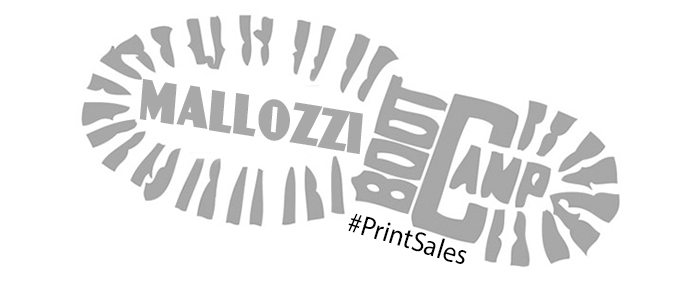If you are just tuning in… I (Deborah Corn) am currently in “sales” bootcamp with my personal drill instructor Kelly Mallozzi. Kelly has agreed to use my journey as the example, and create a blog series for PMC called #PrintSales Training. Since this is what she does for a living, and very successfully, consider yourselves all lucky to be getting this advice for the price of a click! Happy selling!
 #PrintSales Training Part 3: The Art Of Storytelling
#PrintSales Training Part 3: The Art Of Storytelling
by Kelly Mallozzi
OK Deb, so you did your homework and came up with a multi-level pricing structure that gives companies choices for how to engage with you. That is awesome. We won’t go into a huge amount of detail on the particulars of the pricing, but it is enough to say that you are now comfortable telling people your rates and that you can articulate the value and benefits that go along with each different level. KUDOS!
Last month we talked about you making a list of any and all prospective companies that you could envision working with. Let’s talk about that a little more specifically to help you make the best list possible.
It’s time for you to tell me a specific story. And the story goes something like this. “Once upon a time there was a company. They needed help with XX and YY. I came up with an idea to AAA and BBB. We worked on the project together, and this is what happened. Six months later, the company told me that they experienced XX growth and engaged with XX new prospects. They were thrilled.”
Anyone that you are considering as a target should be able to understand the aspects of that story and how working with you JUST MIGHT result in the same kind of happy ending. Bonus points if the company in the story is willing to give you a written testimonial or would provide you with a reference should anyone require one.
So now it’s time to draw up the list. Again, it should consist of any and all companies that would benefit from a relationship with you. First, should be companies that are in the same exact business as the one in the story. Then comes everyone else. If you need to, ask colleagues, friends and associates who THEY think you should be doing business with. Ask for referrals. Invite a friend in a totally unrelated business out for coffee, and pick his/her brain.
Now it’s time to think about the prospecting plan itself. Your plan might include sending a letter, making calls, email messages, and engaging with social media such as Twitter, LinkedIn, and/or Facebook. Think about how much time you can allot to working on this plan EACH DAY. This will help you decide how many of the prospects from your list you can engage with in any given time period. An example of a plan might look like this:
Day one (and these are business days) – send email
Day three – call
Day five – send something in the mail
Day seven – connect via one social channel
Day nine – 2nd email
Day 11 – 2nd call
Day 13 – 2nd social attempt
Day 15 – last call
Day 17 – I give up email
Next week we will talk about scripts for all of the connections above, and I will explain more in depth about the “I Give Up” strategy.
So for now, get cracking on your list, enlist the hold of your peers and friends, and we’ll check back in with each other next month. I can’t wait to hear your story, too! Go get ‘em DEB!
Kelly Mallozzi will contribute to the PMC as often as her life and four small children will allow, which will be at least once a year. As a sales and marketing coach and consultant at Success In Print, Kelly advocates for graphic arts companies to start a revolution and fight to keep print relevant. She may be irreverent, but what she lacks in convention, she makes up for in smart-assery.
will contribute to the PMC as often as her life and four small children will allow, which will be at least once a year. As a sales and marketing coach and consultant at Success In Print, Kelly advocates for graphic arts companies to start a revolution and fight to keep print relevant. She may be irreverent, but what she lacks in convention, she makes up for in smart-assery.
Connect With Kelly: Twitter @SuccessInPrint and check out her weekly blog on Printing Impressions.












